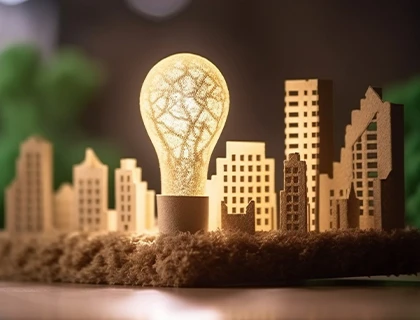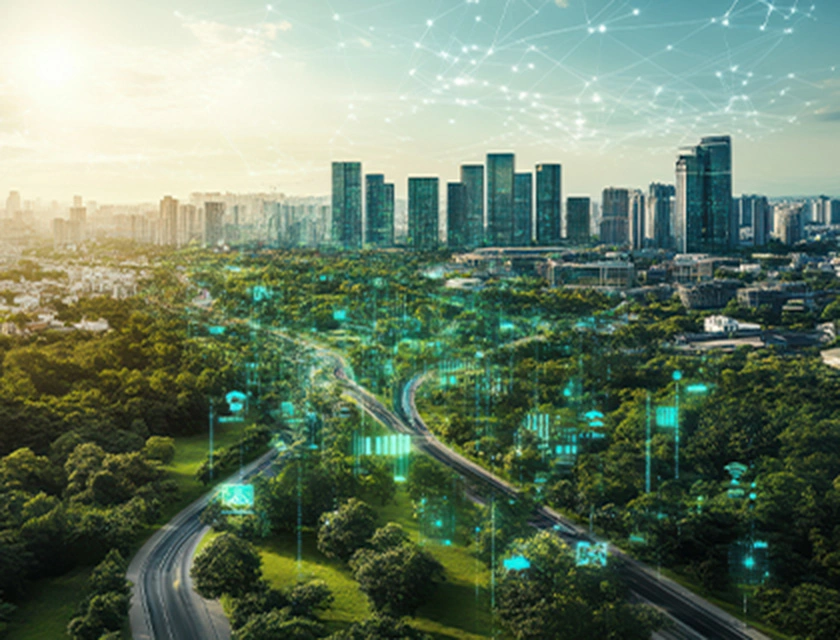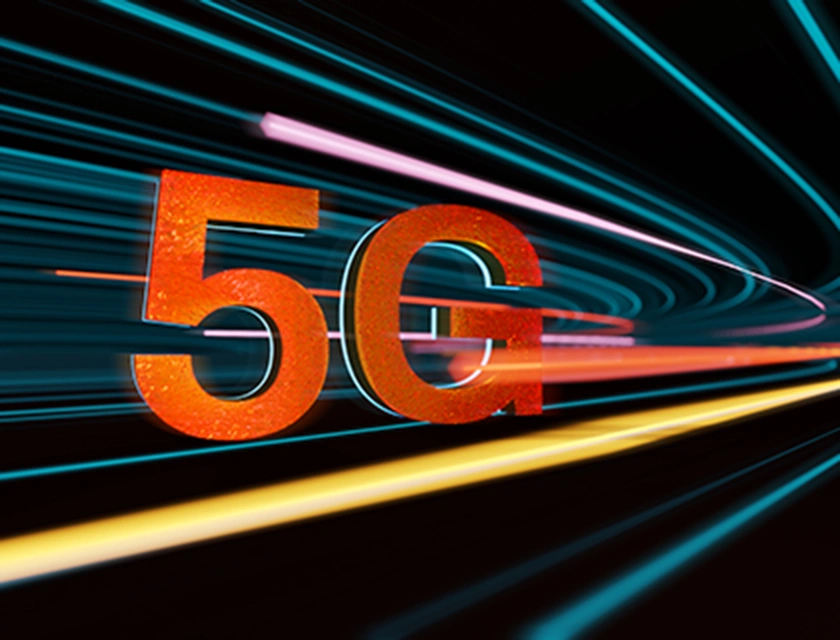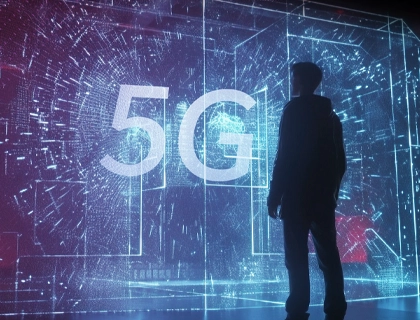
Sustainable by design, 5G drives ESG by enabling tech that allows cities, buildings, and industries to run more efficiently, saving energy and reducing emissions.
6 Mins
25th October 2023
Article
5G, Sustainability, Smart cities, Manufacturing and logistics
5G promises to be a game-changer for business innovation, unlocking a world of latency-sensitive applications such as the use of artificial intelligence, mixed reality, digital twins, and even large language models like ChatGPT. But for many enterprises, the actual task of rolling out innovative use cases remains a question mark.
Though 80% of APAC businesses have invested or plan to invest in 5G,¹ many still struggle to build and implement innovative, ROI-boosting use cases. IDC projects that in 2023, 90% of APAC enterprises will still struggle to leverage 5G applications meaningfully in their day-to-day operations due to “limited integration with tangential technologies”.2
In a post-pandemic market disrupted by global conflict and recession, it is not surprising that many companies are wondering how to balance their environmental, social and governance (ESG) commitments with the cost of doing business.
G7 economies are weathering record inflation. These external economic forces, coupled with the capital many businesses spent to stabilise operations during the pandemic, means that the pool of funds available for ESG initiatives is rapidly dwindling. There is a temptation to cut back on ESG spending and focus on cost-cutting and right-sizing operations. But it is possible to meet both goals.¹
Companies need to shift their perspective from quarterly balance sheets to a long-term view. Research has shown that the long-term negative impact on workforces, supply chain, and customers of these cost-saving initiatives negate the short-term capital bump it generates.²
A long-term perspective is key to implementing sustainable practices that cut costs and increase revenue over time. For example, though the initial capital outlay may seem counterintuitive, digital transformation initiatives positively contribute to both ESG goals and long-term cost reduction by achieving tangible and measurable benefits for human well-being and sustainability.³ When digital transformation is powered by 5G, its potential impact can be limitless.
5G is sustainable by design. 5G cell sites use only 15% of the energy of a 4G cell site to transmit the same amount of data. If all cell sites worldwide transitioned to 5G, CO₂ emissions could be reduced by as much as half a billion tonnes by 2030.⁴
5G is also purpose-built to bring connectivity to where data is produced, making it an energy-efficient and accessible system. With AI and IoT solutions delivered straight to the locations of industries, the carbon emissions of transport, hospitality, and manufacturing activities are significantly reduced.⁵
5G can impact many ESG-driven initiatives – and even help drive societal change.
A United Nations report states that better connectivity from new technologies is the best way to help improve people's lives in rural areas, enabling them to access better jobs, improve quality of life, and reduce urban migration. 5G technology is already making this a reality, improving access to education and healthcare, and helping increase investment in architecture in rural areas in Sri Lanka, Japan, and China.⁶
In education, 5G’s low latency rate and greater available bandwidth have the potential to revolutionise remote learning. Compared with a 4G cell tower, a 5G tower can support 10 times as many devices, making it ideal for campuses. By solving persistent connectivity issues, streamlining logistics, and improving the learning experience for students and teachers, 5G can make learning more accessible to more people. ⁷

Smart cities
Radar and cameras cut down on vehicle idling, reducing emissions by 20% in Pittsburgh.⁸

Smart manufacturing
Repair time was halved, and fault detection increased by 15% in an Ericsson smart factory.⁹

Smart buildings
Energy savings were generated by calibrating the indoor lighting of a building in Singapore based on the sun’s intensity.¹⁰
Cities can also benefit from sustainability initiatives powered by 5G. Smart cities use 5G to link smartphones, IoT, and sensors to better manage resources. In Pittsburgh, for example, a smart traffic control system uses radar and cameras to reduce idling and help drivers find parking, reducing greenhouse gas emissions in the city by 20%.⁸
For industries, 5G is essential for smart manufacturing. It powers technologies such as the industrial Internet of Things (IIoT), cloud and edge computing, big data analytics, artificial intelligence, machine learning (MI), augmented/virtual reality, and advanced robotics to digitally transform the manufacturing process to improve productivity and safety while also reducing cost.
Smart manufacturing also increases efficiency and reduces overall waste and emissions. Ericsson’s smart factory in Estonia, for example, uses augmented reality overlays deployed on a private 5G network to search documents to troubleshoot and repair electronic boards. This reduced repair time by roughly 50% and increased fault detection by 15%. Fewer components needed to be replaced, which also reduced power consumption and waste byproducts.⁹
Smart buildings use 5G and IoT sensors to manage energy consumption efficiently. For example, smart buildings can calibrate indoor lighting based on the intensity of outdoor light, while another uses an acoustic-based maintenance system to monitor its HVAC systems and alert them to repair.¹⁰
There’s even a case to be made about improving human resources in a world where hybrid work is now the norm. 5G powers edge computing and augmented/virtual reality to bring colleagues in disparate locations together. Engineers can interact with each other in a 3D augmented reality CAD environment, while guided maintenance, repairs, and operations (MRO) solutions let experts remotely train onsite technicians.¹¹ These improve collaboration while enabling energy and emissions savings.
It’s possible to use 5G to meet ESG goals – while at the same time keeping sight of business targets. With a long-term strategy and clearly defined goals, companies can future-proof their organisations. Learn how 5G can boost your sustainability initiatives. Contact us to learn more.
References:

5G, Healthcare, IoT

5G, Sustainability, Connectivity

5G

Healthcare, 5G, Network slicing, Smart cities

5G, Network slicing

5G, Healthcare, Network slicing, Smart cities
Get the latest digest on business and technology trends straight to your inbox.